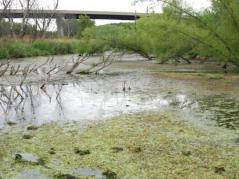 The federal Clean Water Act and regulations in many states require some kind of mitigation for wetland loss. A state wildlife biologist of some type is often involved in these decisions, even if it is not a biologist with the wildlife department.
The federal Clean Water Act and regulations in many states require some kind of mitigation for wetland loss. A state wildlife biologist of some type is often involved in these decisions, even if it is not a biologist with the wildlife department.
As a general rule of thumb, these mitigation measures are a lose-lose proposition, because the restored wetlands do not have the diversity of natural wetlands, and the restored or mitigated wetland often has different properties (for example, at the headwaters versus mainstem). However, a recent paper in the journal Biological Conservation aims to provide a framework for better wetland mitigation decision making.
The model weighs three factors: time lags, uncertainty and measurability of the value being offset.
One of the authors suggests, in a University of Illinois press release, using established wetlands mitigation banks to counter-act the problem of created wetlands being less biologically diverse than established, natural wetlands.
The Biological Conservation paper, found here, requires a subscription or a fee.
You can read the press release from the University of Illinois at Urbana-Champaign College of Agricultural, Consumer and Environmental Sciences, here.
Photo: Wetland, courtesy of the University of Illinois at Urbana-Champaign College of Agricultural, Consumer and Environmental Sciences
